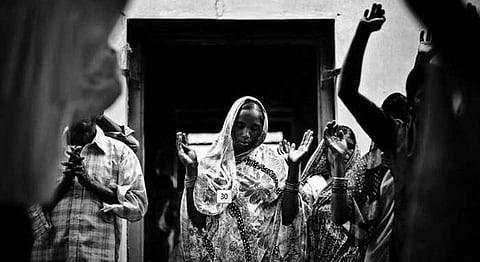
- HOMEGROWN WORLD
- #HGCREATORS
- #HGEXPLORE
- #HGVOICES
- #HGSHOP
- CAREERS
- ABOUT US
- CONTACT US

Orissa’s Kandhamal district has witnessed friction amongst its two majority communities for many years, with things coming to a boil in 2008, when communal riots took on an unprecedented scale.
The Kandha community constitutes 52% of the district’s demographics and practise Hinduism in various forms. The dalit Pana community, socio-economically and politically a dominant presence in the region, are mostly followers of Christianity, a religion in which they took refuge, to liberate themselves from the Hindu caste hierarchy.
Land rights have remained a bone of contention amongst the two communities for a while now, but the killing of Swati Lakshmananda Saraswati, a Vishwa Hindu Parishad leader, and four others, in August, 2008, by suspected Maoists was a tipping point.
The Panas, known to be a Maoist community, were attacked by the Kanhas in the aftermath of his death, with an estimated 315 churches, and several Christian-run orphanages being burnt to the ground. The death toll mounted to 39, including 2 police personnel and 3 rioters, (the Human Rights groups estimate to over 100 persons killed, including disabled and elderly persons, children, men and women) with 12,000 people forced out of their homes to escape the wide-spread violence and wrathful Hindu mobs on rampage, that engulfed more than 600 villages.
It was estimated that more than 10,000 children dropped out of schools due to displacement and security while thousands were pushed to unhygienic relief camps for nearly three years. While the frenzy has subsided now, and Christian families have returned to their homes to rebuild their lives, Daichi Koda’s photo series reveals how fragile this peace is, and how people’s fears remain tangible in the air, acrid from a violent past.
Poignant in black-and-white, the photographs feature moments from the lives of some of these villagers at a momentous point in their lives. Unmistakably cinematic and disquieting, the series translates the intangible apprehensions following the communal riots in a highly evocative manner.
Scroll on to view more images from the documentarian series:
Image Credit: Daichi Koda
[Daichi Koda began taking photographs when he was 20 and ever since, he has continued to work on independent photography projects. These days, he carries out long-term projects, mainly in Japan, such as Fukushima.]
